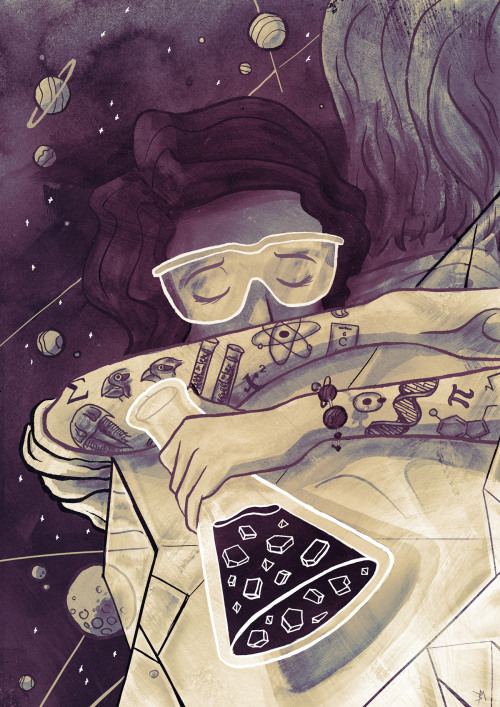Punk science: from dawn till dusk
Greetings, fellow punk scientists!
Summer has come and gone, and with it comes another round of punk science for all three of the nerds like me who live and work here in our community.
Recently, I stumbled into two potentially scientific topics that made me pause and ask myself: how does that work?
The first one was a matter of spectacle and the one I chose to kick off the latest semester of punk science. Sunsets.
Often, when a nice sunset appears on the horizon, people will admire it with some passion. The reds and blues and purples and yellows come out in vibrant swatches, and even the tamest sunset can be a magnificent display to witness.
A few weeks ago, we had a streak of very lovely sunsets over the mountains here in Johnson, and it made me wonder how exactly these sunsets could have so much color and be so beautiful. How did all of that work?
The answer both sounds simpler than is should and is also entirely more complicated than it looks at first glance.
The first thing that determines how a sunset will appear to the naked eye is where you are. This is because the main cause of sunsets, a phenomenon called Rayleigh scattering, takes place because of particles in the sky. If you are in a different location with different particles, then you are going to see a different colored sunset from a place that has a different particle make up.
This process of Rayleigh scattering involves light being refracted off of dust particles, atmospheric gasses and water droplets, all of which reside in the air around us. These bits of matter all have different effects on light as it passes by. Depending on the size of the particle and the wavelength of light, the colors that show up when the light is dispersed may vary widely.
In addition, the angle of approaching sunlight determines how much of it is scattered by those particles. Light during the middle of the day comes straight down from the sun and passes through the layer of atmospheric particles relatively quickly, reducing the amount of scattering. However, at dawn and at dusk, the light is skimming along far more of those particles because it is approaching from a much longer angle. This means that there will be more scattering, and thus, much more of a differentiation between the colors that we can see.
This is also why most sunsets appear in the red, yellow and orange spectrum. The wavelengths are longer and thus are not scattered as much, meaning our eyes see them more clearly than the shorter blue and purple wavelengths which often have an easier time transmitting during the day.
Since human eyes have a relatively small spectrum of visible light they can detect, this also impacts the way we see sunsets and even sunny blue skies. Because we have trouble detecting colors in the violet spectrum, the sky appears to us as blue.
The amount of nitrogen and oxygen in our air influences blue and violet light as well, as those elements act like mirrors and reflect those spectrums of light back from where they came from rather than letting them continue on for us to see. That’s why the sky looks so blue. It’s because there is less blue light making it down to ground level, and more of it trapped in our atmosphere.
Other factors that affect sunsets include pollution, humidity, and temperature. Colder nights mean that there is less humidity, which in turn means that there will be more vivid sunset colors during the winter months. Pollution makes the skyline hazy and results in less light passing through those particles. This mutes the colors and makes sunsets look far less impressive.
There’s more to pretty evening skies than just particle interactions with light. Another phenomenon that piqued my interest during research is that the sun sets earlier than we think it does. That last sliver of sunlight that you see over the horizon at the end of the day is an illusion caused by the sun’s rays actually curving around the earth and its magnetic field. The sun has already set beyond our line of sight, but we can still see that patch of brightness for some time afterwards.
With that, our look into the beauty and variability of sunsets is finished. Make sure to watch for the next installment of Punk Science this fall, where we’ll be looking at yet another fascinating topic in the STEM world. Until next time, farewell from Punk Science, where we’re making science cool again!

Senior, BFA Creative Writing major from Craftsbury, VT.
Resident Punk Scientist and Basement Medicine Web Wrangler.
I love science and writing, and...




